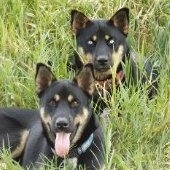Growing Wild Highland Mango
-
Recently Browsing 0 members
- No registered users viewing this page.
Announcements
-
Topics
-
-
Popular Contributors
-
-
Latest posts...
-
9
Has anyone had this happen?
I did consider that, but I don't believe it's counterfeit. The packaging looks exactly like the genuine article with crisp printing and no spelling mistakes. There is even a QR code leading to product details on the Thai Industrial Standards institute, where you can also file a complaint about product not meeting standards. -
38
Crime Thai Teens Arrested for Setting Disabled Dog on Fire
Potential serial killers start off doing things like this. -
46
Report Thai Human Rights Stalemate: Arrests and Restrictions Worry US
Eminating from a country that currently doesn't practice what they like to preach. -
11
90 day reporting - when is the 90 days counted from??
And that means you could do the report on any working day from next Monday (18). August 14 would have been the first day you could have done the report. -
125
‘Putin clearly won’: Pundits say meeting was ‘bad for Americans’
Yeh, shake hands with Hitler 2025......😬 -
65
Traffic Pattaya's Helmet Dilemma: German Tourists Weigh In
Well once your face resembles a peeled mango from your face sliding down the road maybe you should have used a full face and put up with a sweaty hair do.
-
-
Popular in The Pub









Recommended Posts
Create an account or sign in to comment
You need to be a member in order to leave a comment
Create an account
Sign up for a new account in our community. It's easy!
Register a new accountSign in
Already have an account? Sign in here.
Sign In Now